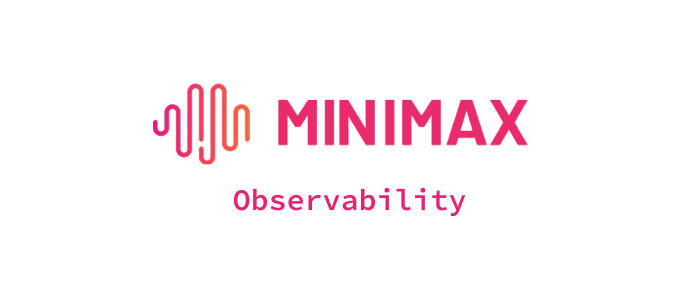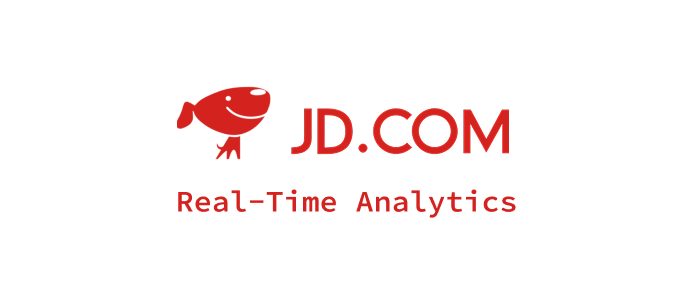What is MCP (Model Context Protocol)?
The Model Context Protocol (MCP) is an open standard that enables large language models (LLMs) to dynamically interact with external tools, databases, and APIs through a standardized interface. Introduced by Anthropic in November 2024 and later adopted by OpenAI, MCP provides a universal, open standard for connecting AI systems with data sources, replacing fragmented integrations with a single protocol that enables seamless, secure, and scalable AI workflows.
Why Do We Need MCP?
Integration Complexity Challenge
Modern AI applications require access to diverse external systems, APIs, and data sources. Without standardization, each integration requires custom implementation, leading to fragmented architectures and maintenance overhead.
Context Limitation Resolution
LLMs need dynamic access to current, domain-specific information beyond their training data. MCP enables real-time access to external context while maintaining security and performance standards.
Ecosystem Fragmentation
AI development suffers from incompatible integration patterns across platforms and tools. MCP establishes a unified protocol that works across different AI systems, development environments, and data sources.
Security and Scalability
Custom integrations often lack proper security controls and struggle to scale. MCP provides standardized security patterns and architectural guidelines for production-ready AI applications.
MCP Architecture
Client-Host-Server Architecture
MCP follows a three-tier architecture where AI applications (clients) connect through hosts to external services (servers):
Client Layer: AI applications, IDEs, and chat interfaces that need external context and capabilities.
Host Layer: Runtime environments that manage MCP connections, handle protocol negotiation, and provide security controls.
Server Layer: External services that expose resources, tools, and capabilities through the MCP protocol.
Resource Management System
MCP organizes external context through two primary abstractions:
Resources: Provide contextual data such as files, database schemas, documentation, and application-specific information, each uniquely identified by URI.
Tools: Enable action-oriented interactions including API calls, database queries, computations, and external system operations.
Protocol Standardization
JSON-RPC-based communication protocol ensures consistent message formatting, error handling, and capability negotiation across implementations and platforms.
Key Features of MCP
Universal Compatibility
Single protocol works across different programming languages, AI platforms, and external systems, reducing integration complexity and development overhead.
Dynamic Resource Discovery
Servers can dynamically expose available resources and tools, allowing AI systems to adapt to changing capabilities and data sources without code modifications.
Secure Communication
Built-in authentication, authorization, and sandboxing mechanisms ensure secure interactions between AI systems and external services with fine-grained access controls.
Modular Architecture
Plug-and-play design enables easy addition and removal of services without affecting core application functionality or requiring system-wide changes.
Bidirectional Communication
Protocol supports both AI-initiated requests and server-initiated updates, enabling real-time data synchronization and event-driven interactions.
Common Use Cases for MCP
AI-Powered Development Environments
Integrate code editors with version control, issue tracking, documentation systems, and deployment tools through standardized MCP connectors.
Enterprise AI Assistants
Connect AI systems with internal databases, CRM systems, documentation repositories, and business applications for intelligent workplace automation.
Data Analysis Platforms
Enable AI models to access databases, APIs, file systems, and analytical tools for comprehensive data processing and insights generation.
Customer Support Automation
Integrate AI systems with help desk software, knowledge bases, user databases, and communication platforms for enhanced customer service.
Content Management Systems
Connect AI tools with document repositories, media libraries, collaboration platforms, and publishing workflows for intelligent content operations.
Implementation Examples
Basic MCP Server Implementation (Python)
from mcp import Server, types
from mcp.server import stdio
import asyncio
import json
class DatabaseMCPServer:
def __init__(self):
self.server = Server("database-mcp")
self.setup_handlers()
def setup_handlers(self):
@self.server.list_resources()
async def list_resources() -> list[types.Resource]:
return [
types.Resource(
uri="db://users/schema",
name="Users Database Schema",
description="Schema information for users table",
mimeType="application/json"
),
types.Resource(
uri="db://orders/recent",
name="Recent Orders",
description="Last 100 orders from the database",
mimeType="application/json"
)
]
@self.server.read_resource()
async def read_resource(uri: str) -> str:
if uri == "db://users/schema":
return json.dumps({
"table": "users",
"columns": {
"id": "integer primary key",
"name": "varchar(255)",
"email": "varchar(255) unique",
"created_at": "timestamp"
}
})
elif uri == "db://orders/recent":
# Simulate database query
return json.dumps([
{"id": 1, "user_id": 123, "amount": 99.99, "status": "completed"},
{"id": 2, "user_id": 456, "amount": 149.99, "status": "pending"}
])
else:
raise ValueError(f"Unknown resource: {uri}")
@self.server.list_tools()
async def list_tools() -> list[types.Tool]:
return [
types.Tool(
name="execute_query",
description="Execute SQL query on the database",
inputSchema={
"type": "object",
"properties": {
"query": {"type": "string"},
"limit": {"type": "integer", "default": 100}
},
"required": ["query"]
}
)
]
@self.server.call_tool()
async def call_tool(name: str, arguments: dict) -> list[types.TextContent]:
if name == "execute_query":
query = arguments["query"]
limit = arguments.get("limit", 100)
# Simulate query execution
result = f"Executed: {query} (limit: {limit})"
return [types.TextContent(
type="text",
text=f"Query result: {result}"
)]
else:
raise ValueError(f"Unknown tool: {name}")
# Run the server
async def main():
server_instance = DatabaseMCPServer()
async with stdio.stdio_server() as (read_stream, write_stream):
await server_instance.server.run(
read_stream,
write_stream,
server_instance.server.create_initialization_options()
)
if __name__ == "__main__":
asyncio.run(main())
MCP Client Implementation (TypeScript)
import { Client } from '@modelcontextprotocol/sdk/client/index.js';
import { StdioClientTransport } from '@modelcontextprotocol/sdk/client/stdio.js';
import { spawn } from 'child_process';
class MCPClient {
private client: Client;
private transport: StdioClientTransport;
async initialize(serverCommand: string, serverArgs: string[]) {
// Spawn MCP server process
const serverProcess = spawn(serverCommand, serverArgs);
// Create transport
this.transport = new StdioClientTransport({
reader: serverProcess.stdout,
writer: serverProcess.stdin
});
// Initialize client
this.client = new Client({
name: "example-client",
version: "1.0.0"
}, {
capabilities: {}
});
// Connect to server
await this.client.connect(this.transport);
}
async listResources() {
const response = await this.client.listResources();
return response.resources;
}
async readResource(uri: string) {
const response = await this.client.readResource({ uri });
return response.contents;
}
async listTools() {
const response = await this.client.listTools();
return response.tools;
}
async callTool(name: string, arguments: Record<string, any>) {
const response = await this.client.callTool({
name,
arguments
});
return response.content;
}
async close() {
await this.client.close();
}
}
// Usage example
async function demonstrateMCP() {
const client = new MCPClient();
try {
await client.initialize('python', ['database_server.py']);
// List available resources
const resources = await client.listResources();
console.log('Available resources:', resources);
// Read a specific resource
const schema = await client.readResource('db://users/schema');
console.log('Users schema:', schema);
// List available tools
const tools = await client.listTools();
console.log('Available tools:', tools);
// Execute a tool
const result = await client.callTool('execute_query', {
query: 'SELECT * FROM users WHERE created_at > NOW() - INTERVAL 7 DAY',
limit: 50
});
console.log('Query result:', result);
} catch (error) {
console.error('MCP operation failed:', error);
} finally {
await client.close();
}
}
demonstrateMCP();
Spring Boot MCP Integration
@RestController
@RequestMapping("/mcp")
public class MCPController {
@Autowired
private MCPClientService mcpClientService;
@PostMapping("/query")
public ResponseEntity<Object> executeQuery(@RequestBody QueryRequest request) {
try {
// Connect to MCP server
MCPClient client = mcpClientService.getClient("database-server");
// Call tool through MCP
ToolResult result = client.callTool("execute_query", Map.of(
"query", request.getQuery(),
"limit", request.getLimit()
));
return ResponseEntity.ok(result.getContent());
} catch (Exception e) {
return ResponseEntity.status(HttpStatus.INTERNAL_SERVER_ERROR)
.body(Map.of("error", e.getMessage()));
}
}
@GetMapping("/resources")
public ResponseEntity<List<Resource>> listResources() {
try {
MCPClient client = mcpClientService.getClient("database-server");
List<Resource> resources = client.listResources();
return ResponseEntity.ok(resources);
} catch (Exception e) {
return ResponseEntity.status(HttpStatus.INTERNAL_SERVER_ERROR).build();
}
}
}
@Service
public class MCPClientService {
private final Map<String, MCPClient> clients = new ConcurrentHashMap<>();
public MCPClient getClient(String serverName) throws Exception {
return clients.computeIfAbsent(serverName, name -> {
try {
MCPClient client = new MCPClient(name);
client.connect();
return client;
} catch (Exception e) {
throw new RuntimeException("Failed to create MCP client", e);
}
});
}
@PreDestroy
public void cleanup() {
clients.values().forEach(client -> {
try {
client.close();
} catch (Exception e) {
log.error("Error closing MCP client", e);
}
});
}
}
Docker-Compose MCP Environment
version: '3.8'
services:
mcp-host:
image: anthropic/mcp-host:latest
container_name: mcp-host
environment:
- MCP_HOST_CONFIG=/config/host-config.json
volumes:
- ./config:/config:ro
- ./servers:/servers:ro
ports:
- "8080:8080"
depends_on:
- database-server
- file-server
database-server:
build:
context: ./servers/database
dockerfile: Dockerfile
container_name: mcp-database-server
environment:
- DATABASE_URL=postgresql://user:pass@postgres:5432/mcpdb
- MCP_SERVER_NAME=database-mcp
depends_on:
- postgres
file-server:
build:
context: ./servers/filesystem
dockerfile: Dockerfile
container_name: mcp-file-server
environment:
- ROOT_PATH=/data
- MCP_SERVER_NAME=file-mcp
volumes:
- ./data:/data:ro
postgres:
image: postgres:15
container_name: mcp-postgres
environment:
- POSTGRES_DB=mcpdb
- POSTGRES_USER=user
- POSTGRES_PASSWORD=pass
volumes:
- postgres_data:/var/lib/postgresql/data
volumes:
postgres_data:
networks:
default:
name: mcp-network
Key Takeaways
The Model Context Protocol represents a fundamental shift toward standardized AI system integration, providing a universal framework for connecting language models with external resources and tools. By establishing common patterns for resource discovery, tool invocation, and secure communication, MCP reduces integration complexity while enabling more sophisticated AI applications. The protocol's adoption by major AI platforms and the growing ecosystem of connectors demonstrate its potential to become the standard for AI system integration. For developers building AI applications, MCP offers a future-proof approach to external system integration that scales with application complexity and evolves with the AI ecosystem.
Frequently Asked Questions
Q: How does MCP differ from traditional API integrations?
A: MCP provides a standardized protocol with built-in discovery, security, and capability negotiation, while traditional APIs require custom integration code. MCP enables dynamic resource discovery and standardized error handling across all integrations.
Q: Is MCP compatible with existing AI platforms?
A: Yes, MCP has been adopted by major platforms including Anthropic's Claude, OpenAI's systems, and various development environments. SDKs are available for Python, TypeScript, Java, and other languages.
Q: What security features does MCP provide?
A: MCP includes authentication mechanisms, permission-based access controls, resource sandboxing, and secure communication channels. Servers can implement fine-grained access controls for resources and tools.
Q: Can I use MCP with non-AI applications?
A: While designed for AI systems, MCP's resource and tool abstraction model can be used for any application needing standardized access to external services and data sources.
Q: How do I migrate existing integrations to MCP?
A: Migration involves wrapping existing APIs with MCP server implementations, updating client code to use MCP SDKs, and gradually replacing custom integration logic with standardized MCP patterns.



